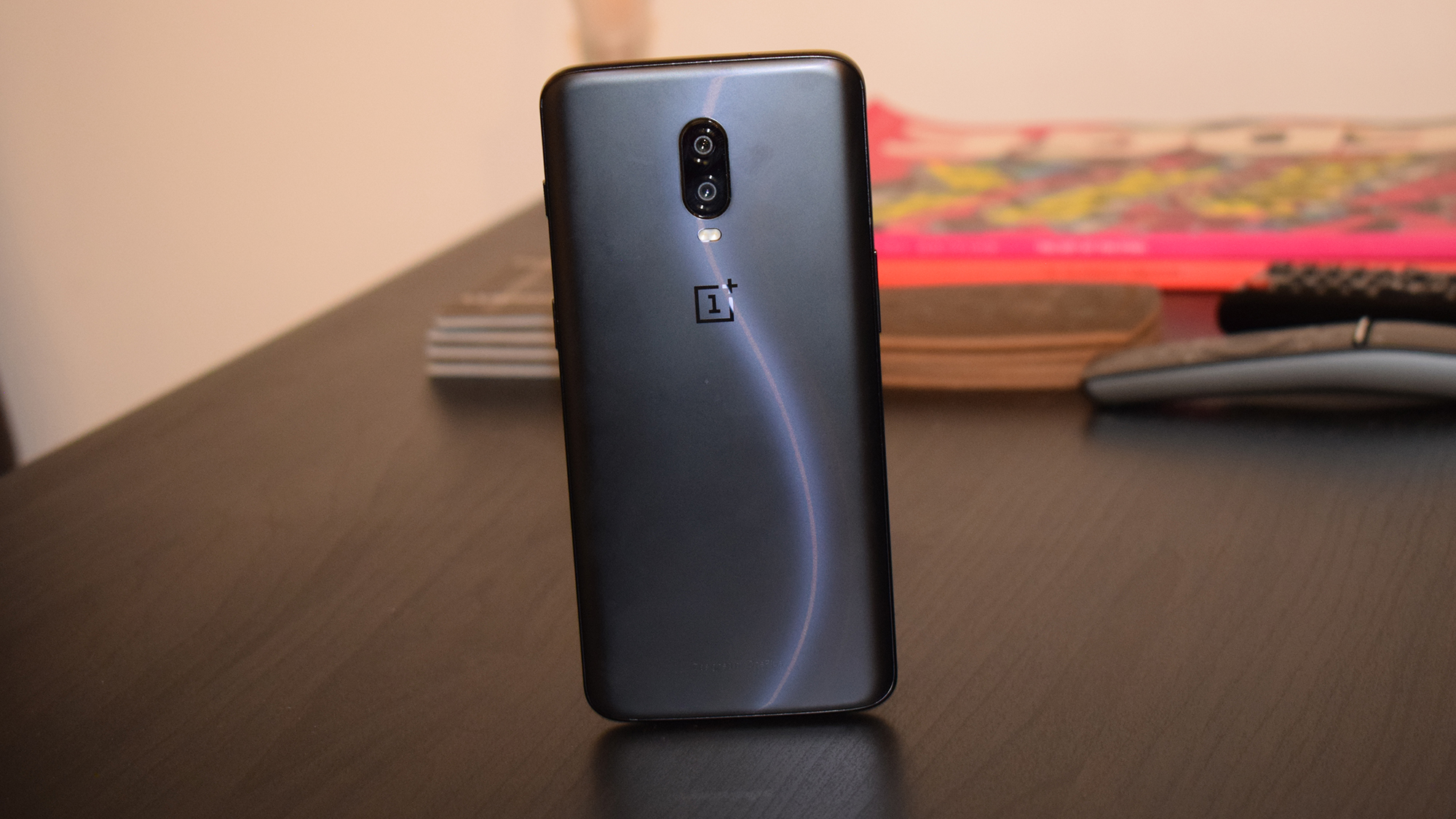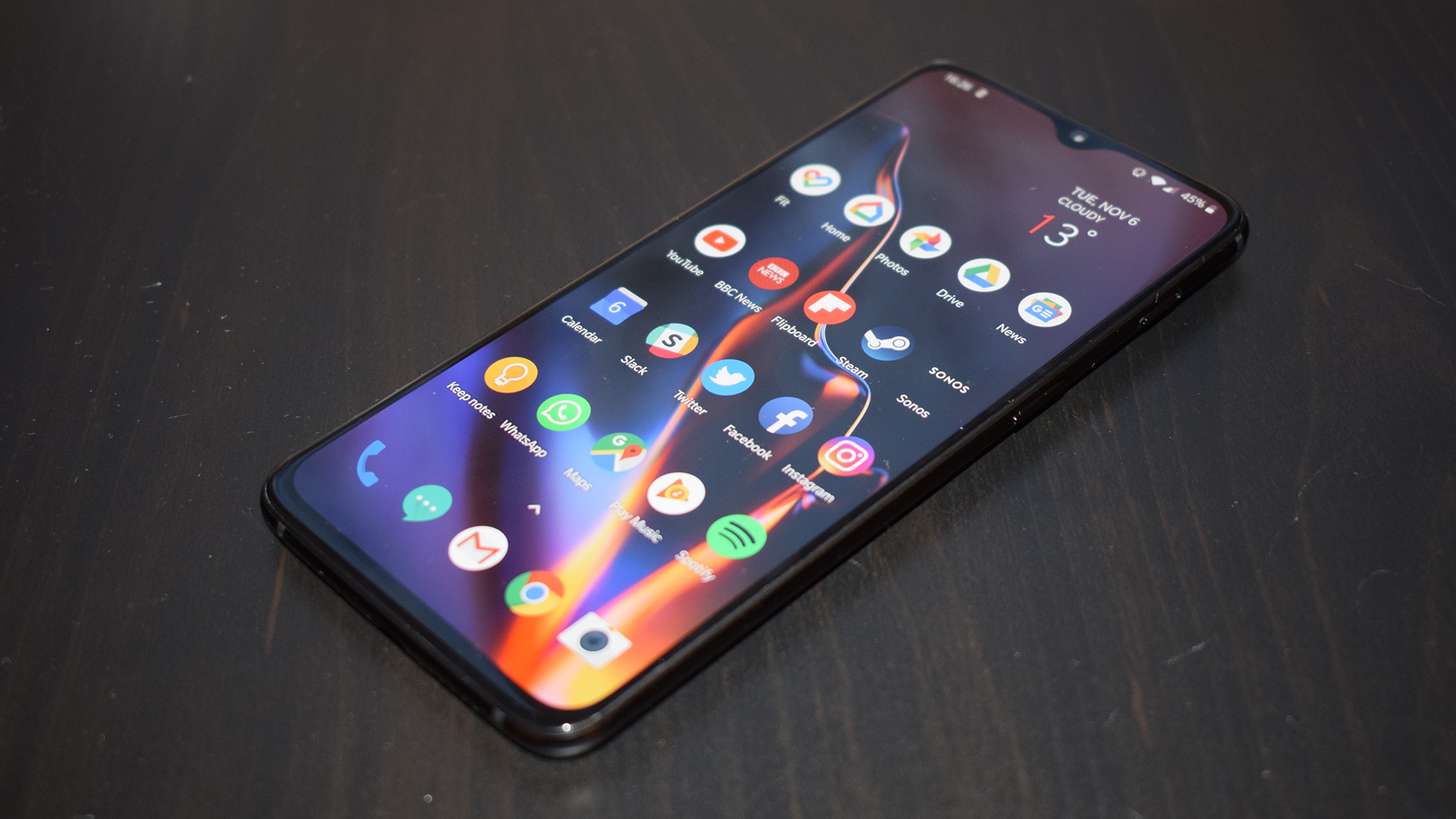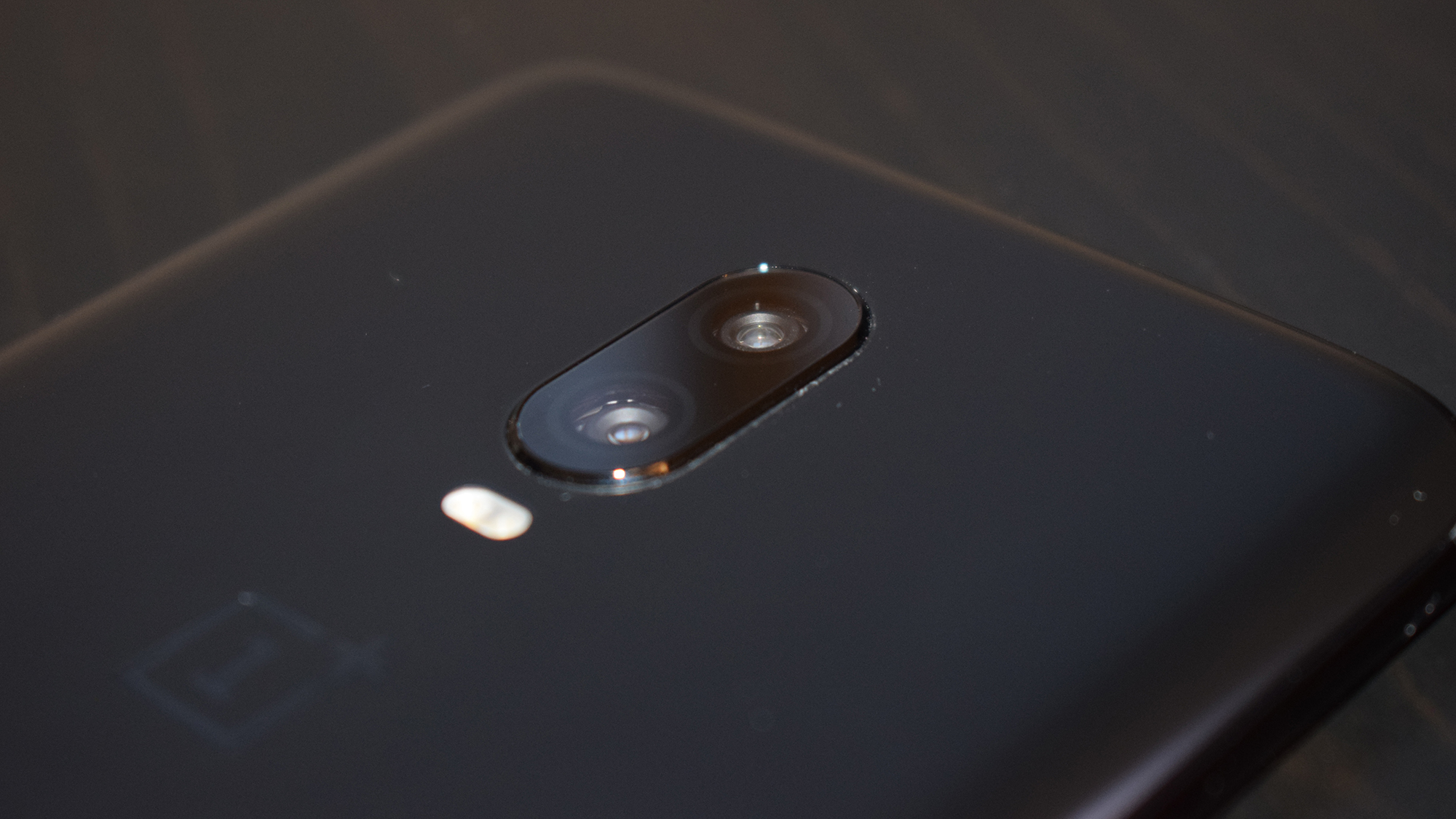OnePlus 6T review: Still the best value around
The best pound-for-pound Android phone around, but its an incremental upgrade
If you have a OnePlus 6, then the 6T doesn't warrant an upgrade. But with a starting price of £499 for the model with 6GB of RAM and 128GB of storage and a max price of £579 for the 8GB/256GB handset, the OnePlus 6T is still excellent value for an Android phone with huge performance, a lovely design and a very good camera.
-
+
Solid specs for a competitive price; Lovely design; Longer battery life
-
-
Small evolution on the OnePlus 6; No standout features; Display is still only FHD+

OnePlus has been flying the flag for flagship-killing Android smartphones for a couple of years now, with the OnePlus 6 setting the benchmark for delivering high-end smartphone features for a price that significantly undercuts some of the finest handsets out there.
With each new generation of OnePlus phone, the Chinese firm creates a 'T' version, offering a suite of nips and tucks to improve upon the phone OnePlus released some six months earlier.
It's the same story with the OnePlus 6T; it's another top-drawer Android phone, but one that's a small upgrade over the OnePlus 6.
Can it compete with the some of the best Android phones of 2018, though?

OnePlus 6T: Design
At first glance, you're not likely to spot many differences between the 6T and its predecessor. The rounded rectangular design is immediately familiar only this time it squeezes in a 6.41in display - up a slither compared to the 6's 6.3in screen.
The bezels are slightly slimmer as well, thanks to the display taking up 86% of the handset's front, which has the knock-on effect of making the 6T slightly taller than its predecessor.
What you will notice is the change in the notch, which now takes up around 50% less screen space with a teardrop design that houses the front-facing camera; the earpiece speaker now sits in a tiny slit on the top bezel, and the notification light has been removed completely.
The only other noticeable changes are the purging of the 3.5mm headphone jack in favour of audio over USB-C, and the removal of the rear fingerprint scanner, which has been replaced by an under-display sensor; more on that later.
The OnePlus 6T is also a tad heavier than the 6 and it sports two speaker grilles on its bottom, though these are for aesthetic rather than practical purposes, as the 6T has a mono rather than stereo speaker setup. This is a little disappointing when compared to the audio strength of phones like the Pixel 3, but the 6T still puts out enough sound to be serviceable if you don't have a pair of headphones handy.

Overall, the OnePlus 6T is a good-looking, well-built phone, and with Gorilla Glass 6 on the front and Gorilla Glass 5 on the rear, it's likely to withstand a good bit of wear and tear.
OnePlus 6T: Display
With the exception of the new notch design and a slight boost in size, the OnePlus 6T's AMOLED display is basically the same as the screen on the 6. It sports a familiar 2,340x1080 resolution with a 402 pixel per inch density.
The FHD+ resolution is a tad lacking when compared to the 2K panels offered by the likes of the Samsung Galaxy S9, but nevertheless, the 6T's screen is still lovely and sharp.
Colours are accurate too - once you move from the default screen setting, which oversaturates the colour pallet, to the DCI-P3 or sRGB settings. In the latter, the display covers 99.6% of the sRGB colour gamut, and though it's not class-leading in terms of pure accuracy, the display is more than good enough for the 6T to rub shoulders with much more expensive phones.
Black levels and contrast are suitably impressive, but that's pretty much a given with AMOLED-toting phones.

For people who hate notches, the new teardrop notch means there's more screen space than ever before, not that the OnePlus 6's notch was that intrusive. Yet it does make viewing anything from emails and web pages to graphics-heavy graphs and videos even more of joy, if not dramatically different.
OnePlus 6T: Specs and performance
Under the hood, the OnePlus 6T has the same Snapdragon 845 chipset as its predecessor and other flagship Android phones. That chip is matched with 6GB or 8GB of RAM; our review unit had the latter.
And much like the OnePlus 6, the 6T's performance is stellar. In Geekbench 4, the eight-core processor scored 2,326 in the single-core test and 8,815 in the multi-core test, which is about as good as any flagship 2018 phone.
In real-world use, the 6T practically flies through Android 9 Pie, with app animations and transitions silky smooth and certainly on par with the Pixel 3.
Although OnePlus has touted software improvements to its OxygenOS user interface (currently on its ninth generation) to optimise background processes and improve performance in Android, there wasn't any noticeable difference between the 6T and the 6. It does, however, have one of the neatest and smoothest implementations of gesture control we've seen on an Android phone.

While 8GB of RAM might seem like overkill for current generation apps, the starting storage option of 128GB is much appreciated, as is the scope to opt for 256GB. Again, it's not class-leading storage space - for that you'll need to turn to the Note 9 - but it's more than enough for most users.
That, in essence, is the OnePlus 6T's performance in a nutshell; it pretty much offers everything all but the most power and storage-hungry users will need.
OnePlus 6T: Battery life
OnePlus has pumped an extra 400mAh into the 6T's battery pack, bringing it up to 3,700mAh. That's a much-appreciated upgrade, as the OnePlus 6's main weak point was a slightly disappointing battery life.
In our tests, the 6T managed to last 21 hours and 40 minutes, outlasting the 6 by some four hours. In practical terms, that translates to a full working day of power including everything from web browsing and email, to Slack messaging and watching videos.
If you're after a workhorse of a phone then the 6T certainly has the battery life to facilitate working on the move without worrying about finding a socket on the journey home.
Rapid charging remains present and correct, with OnePlus' Dash Charge filling the battery to a day's worth of power in 30mins.

There's also Android Pie's Adaptive Battery feature which, over time, should use its machine learning capabilities to automatically optimise battery life.
OnePlus 6T: Camera
While the battery pack had an upgrade, the 6T's camera array remains the same as its older sibling, albeit in a slightly slimmed down module. The dual camera rear setup still makes use of a 16-megapixel lens with a f/1.7 aperture and a second 20-megapixel lens for depth sensing and aiding low-light photography.
OnePlus has touted software improvements to the camera, but we struggled to see any difference between the 6T and the 6. That's no bad thing as the 6 produced nicely detailed and colour rich photos, and the 6T does the same.
It can't quite compete with the quality of the Pixel 3, iPhone Xs or Huawei Mate 20 Pro, especially when zoomed in. But those phones are far more expensive and the 6T still does a sterling job for anyone who's not obsessed with getting the very best in smartphone photography.
A new 'Nightscape' mode has been added to the camera's software, which helps pick out more detail in poorly lit circumstances by effectively brightening up a scene. It's interesting but tends to produce over-processed results which don't look very natural.

The front-facing 16-megapixel camera also performs admirably and can handle portrait photos with blurred backgrounds for 'bokeh' effects with decent aplomb.
Video performance is as solid as it was in the OnePlus 6, with 4K video capture on offer at 60 frames-per-second and an impressive slow-motion mode.
OnePlus 6T: Features
When it comes to extras, OnePlus has always erred on that side of less is more; that's the case with the 6T.
There's no IP water-resistance rating, though the 6T comes with silicone rings and sealant to prevent occasional liquid splashes from ruining it. Nor will you find any capabilities to turn the 6T into a pseudo desktop experience with an adapter, or any dedicated AI assistant, as is the case with Samsung Galaxy handsets.
But the lack of frills arguably makes the 6T a more enjoyable phone to use, with little getting in the way of your day-to-day smartphone use, while Face Unlock offers lightning-fast security login without the need to tap at the phone.
The one outstanding feature the handset sports is its under-display fingerprint scanner. While OnePlus isn't the first to have tapped into such tech, it has implemented it very well.

It takes a mere 350 milliseconds to unlock the phone from placing a finger on an icon that pops up in the lower centre of the screen. That's not a speedy as the rear fingerprint scanner on the OnePlus 6, but it's easy to get used to the half-a-heartbeat time difference and helps lend a degree of innovation to the 6T.
OnePlus 6T: Verdict
'Incremental upgrade' is the label we'd be tempted to give the OnePlus 6T - but that would be doing it a disservice. It may not be perfect, but you can spend a lot more to get a slightly better camera and sharper screen and not necessarily notice the difference.
The little changes to the design and the under-screen fingerprint scanner add up to make the OnePlus 6T one of the very best Android phones around and a handset we'd compel you to consider as your next smartphone for work and play.
Verdict
If you have a OnePlus 6, then the 6T doesn't warrant an upgrade. But with a starting price of £499 for the model with 6GB of RAM and 128GB of storage and a max price of £579 for the 8GB/256GB handset, the OnePlus 6T is still excellent value for an Android phone with huge performance, a lovely design and a very good camera.
Get the ITPro daily newsletter
Sign up today and you will receive a free copy of our Future Focus 2025 report - the leading guidance on AI, cybersecurity and other IT challenges as per 700+ senior executives
Roland is a passionate newshound whose journalism training initially involved a broadcast specialism, but he’s since found his home in breaking news stories online and in print.
He held a freelance news editor position at ITPro for a number of years after his lengthy stint writing news, analysis, features, and columns for The Inquirer, V3, and Computing. He was also the news editor at Silicon UK before joining Tom’s Guide in April 2020 where he started as the UK Editor and now assumes the role of Managing Editor of News.
Roland’s career has seen him develop expertise in both consumer and business technology, and during his freelance days, he dabbled in the world of automotive and gaming journalism, too.
-
 ‘Phishing kits are a force multiplier': Cheap cyber crime kits can be bought on the dark web for less than $25 – and experts warn it’s lowering the barrier of entry for amateur hackers
‘Phishing kits are a force multiplier': Cheap cyber crime kits can be bought on the dark web for less than $25 – and experts warn it’s lowering the barrier of entry for amateur hackersNews Research from NordVPN shows phishing kits are now widely available on the dark web and via messaging apps like Telegram, and are often selling for less than $25.
By Emma Woollacott Published
-
 Redis unveils new tools for developers working on AI applications
Redis unveils new tools for developers working on AI applicationsNews Redis has announced new tools aimed at making it easier for AI developers to build applications and optimize large language model (LLM) outputs.
By Ross Kelly Published
-
 Google layoffs continue with "hundreds" cut from Chrome, Android, and Pixel teams
Google layoffs continue with "hundreds" cut from Chrome, Android, and Pixel teamsNews The tech giant's efficiency drive enters a third year with devices teams the latest target
By Bobby Hellard Published